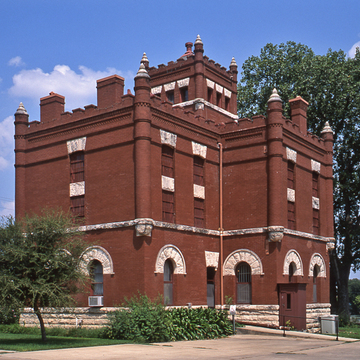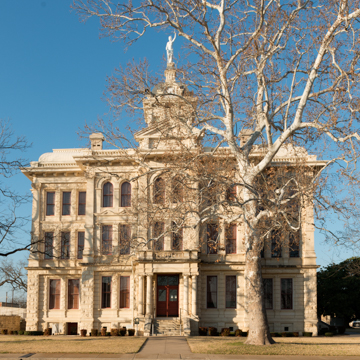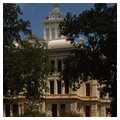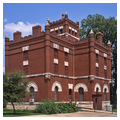The Milam County Courthouse is an outstanding example of Renaissance Revival design. The identical north and south facades are five-part compositions while the east and west fronts are three-part designs. Each of the four fronts has a projecting center pavilion emphasized by a portico and pediment. The entire massing is dominated by a central tower, clad with a decorative sheet-metal skin rising above a convex mansard roof. Four clock faces project from the convex-curved roof of the tower. Perched on a cupola above it all is a statue of Justice. The courthouse was rehabilitated with funds from the Texas Historic Courthouse Preservation Program.
The jail at E. Main Street and S. Fannin Avenue (1893) is a crenellated brick and limestone Romanesque Revival building from the Pauly Jail Building Company. With the exception of the small cut-stone details at the base of the corner turrets, the jail is identical to the Austin County Jail in Bellville ( PF55) built a few years later in 1896.







